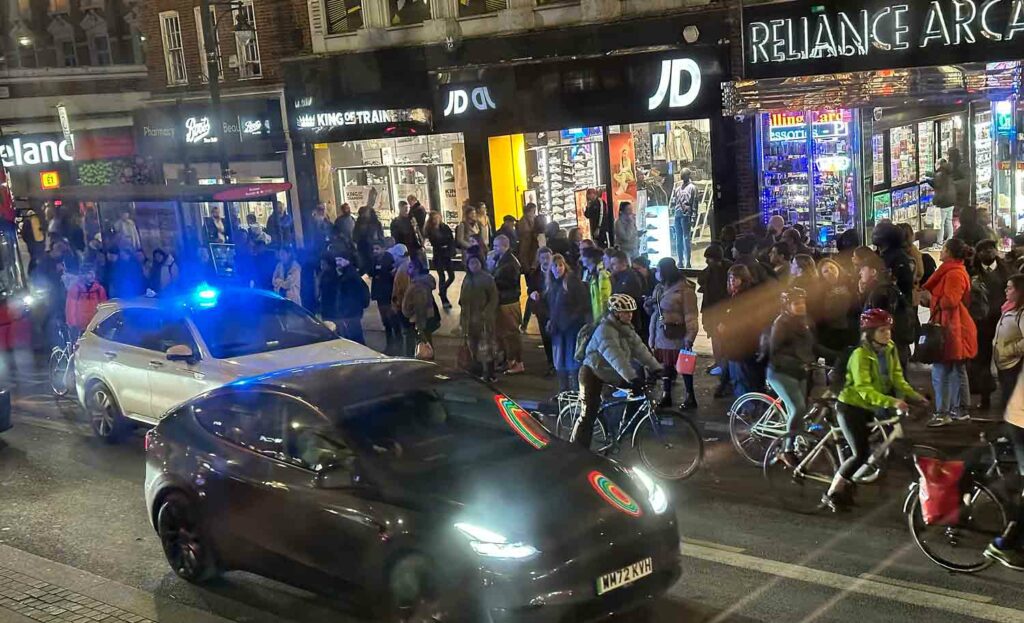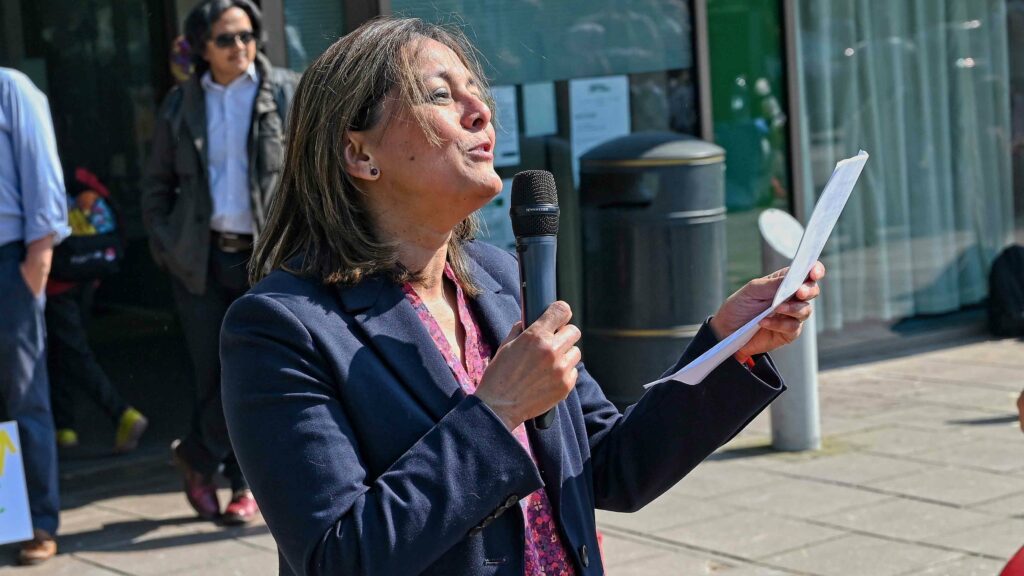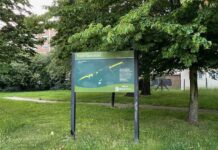
Brixton Road has once again been revealed as having the worst illegal levels of the deadly gas nitrogen dioxide (NO2) in London.
A new analysis published by the Clean Cities Campaign showed the annual mean level of NO2 monitored in central Brixton in 2022 was 62.8 micrograms per cubic metre – 62.8 μg/m3.
The next highest level was 52 μg/m3 in Wallbrook Wharf in the City of London.
The global sustainability consultancy Ricardo found 13 of 76 automatic air pollution monitors in London in 2022 recorded levels above the legal limits of 40 μg/m3.
A new online map charts the NO2 readings of more than 1,700 monitors in London. In 2021, other places in and near Brixton with levels above 40 μg/m3 included Acre Lane, Stockwell Road and Clapham Road.
None of the 76 automatic air quality monitors across London used in the most recent analysis met the latest World Health Organization guidelines for NO2 levels.
NO2 is linked to lung cancer, cardiovascular harm, lower birth weight in newborns and increased risk of premature death.
Publication of the analysis came as some outer London boroughs and Surrey county council are taking London mayor Sadiq Khan to court to try to stop the expansion of the ultra-low emission zone – ULEZ – to the whole of greater London.
Parts of Lambeth, including Brixton, are already inside the zone. Its boundary locally is currently the South Circular.
The Clean Cities Campaign said its analysis followed a report by the National Audit Office showing that progress to tackle illegal levels of NO2 has been slower than expected and that public communications have not been effective.
Road transport, especially diesel vehicles, contributes significantly to levels of NO2 in the capital.
While progress has been made, the analysis shows there is still an urgent need to take more action. This is especially the case for diesel cars, which now contribute three times as much NO2 and similar pollution in London as lorries.
ULEZ bans almost all diesel cars built before 2015 from the roads it covers.
As well as expansion of ULEZ to the whole of London, clean air campaigners are calling progressive tightening of standards to ban NO2 producing vehicles and a zero emission zone in the West End.
“If this isn’t a wake-up call then I don’t know what is,” said Oliver Lord, UK head of the Clean Cities Campaign.
“These limits were meant to be met 12 years ago, and when that eventually happens, they are still four times World Health Organization guidelines.
“We need greater certainty that London is on track to phasing out toxic diesel fumes.
“The ultra low emission zone must be expanded without delay and the Mayor’s plans for a central London zero emission zone need to be expedited. There is no time to waste.”

In April, Lambeth council announced plans for new emissions-based parking charges to help improve air quality. They came into force on 30 May.
The council said the new parking charges structure would ensure that drivers of vehicles that produce toxic emissions pay more to park in Lambeth “helping to tackle climate change and make our streets safer and more pleasant for all”.
Any additional revenue generated through parking permits would help to fund activities including the provision of public transport services, highway maintenance and improvements, and environmental projects, the council said.
This would help to sustain public transport fare concessions, including the Freedom Pass. The council will also promote low-cost active travel schemes including Try Before You Bike, cargo bike hire and child seats on bikes.
Parents whose children get free school meals are eligible for a discount.
A report for the council said the true cost to society of private motor vehicle use, relative to other uses, is not reflected in the price of parking in the borough.
The proposals in the report “aim to introduce fair and proportional charges for parking and remove incentives to car use”.
Almost a quarter of Lambeth’s annual carbon emissions are linked to vehicles, despite lower car ownership levels compared to other London boroughs.
Disadvantaged groups locally are less likely to own a car, but more likely to be affected by the effects of car use such as poor air quality, climate change and road danger.
Cllr Rezina Chowdhury, Lambeth council deputy leader and cabinet member for sustainable Lambeth and clean air, said the emissions-based pricing structure, along with the council’s Kerbside Strategy and Air Quality Action Plan, would “ensure Lambeth can continue to tackle toxic air and make our shared spaces fairer and more accessible”.
The council’s new charging system increases the number of parking bands from six to 13, to reflect the impact of vehicle emissions on air quality.
It means drivers will be charged according to the car tax band of their vehicle, which is based on the CO2 emissions it produces, for both on and off-street parking permits.
The new set-up will also increase diesel surcharges for all permit types and increase parking voucher charges for residents and traders.
Lambeth council’s Climate Action Plan is designed to reduce vehicle journeys by 27 per cent and increase walking, cycling and public transport use by 85 per cent.






